Moscow to Rostov-on-Don June 23 – 27
June 23 Sunday: End of River Cruise and Arrival in Moscow at 3pm
From Uglich to Moscow, the boat had to go through six locks. It was a sunny and warm day. I stayed on the deck most of the time enjoying the breeze and sunshine before the end of the cruise.
 |
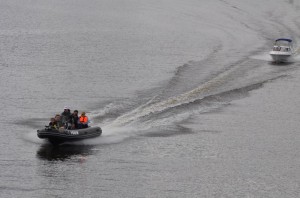 |
Once the boat docked in Moscow, we boarded a bus for a city tour. Moscow situated on the Moskva River has an area of 2,511 square kilometres and a population of over 11.5million people (2010 census). The first reference to Moscow dates from 1147 by Prince Yuri Dolgorukiy. In 1156, a wooden wall, (known as kremlin in Russian) was first built to surround the emerging city. Kremlin means a “fortified town”.
Ivan I of Moscow paid tribute to the Mongol Khan and Moscow grew further as it became the sole collector of taxes for the Mongol-Tatar rulers. It became the centre of power in Russia when the Russian people finally broke away from the Tatar control in 1480 under Ivan III. The city has been attacked and burnt several times in its history. During the French invasion of Russia in 1812, the Muscovites burnt the city before the approach of Napoleon’s forces on September 14. Moscow is not only the capital of Russia but also a major political, economic, cultural and scientific centre in Eurasia.
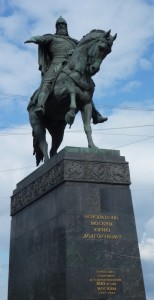 |
We arrived at the Red Square where the iconic St. Basil’s Cathedral (1550s), the Kremlin and GUM (State Universal Store) are located. The Cathedral which proper name is Cathedral of the Intercession was first built to commemorate Ivan the Terrible’s capture of the Mongol stronghold of Kazan. The Squared was crowded and a band was playing loud music in a temporary stage in front of the Cathedral. It was so noisy that the guide took us to the GUM which 242m-long façade on the eastern side of Red Square is magnificent. GUM had some 1,200 stores at the time of the 1917 Revolution and had been under state control during the Soviet era. It has been fully privatised since and is now filled with high-fashion brand names.
I am not interested in shopping and left the guided tour. I headed to the Bolshoi Theatre in the hope of getting a last minute ticket for ballet that evening. All tickets had been sold and a ticket agent could get me a ticket for 9,000 RUB. No thanks. Many workers in Russia only get 6,000-10,000 RUB a month!
I strolled along Tverskaya Street and got a ticket for an opera for 1,100 RUB from a ticket agent. The ticket was printed in Russian and I asked the girl where the theatre was. She pointed at a theatre near the Pushkin Square. I had a beer and delicious light supper in the famous Pushkin Café with baked bone marrow and a small portion of Russian dumplings with mushroom. The lovely meal cost me 1,000 RUB. When I got to a theatre on Tverskaya Street near Pushkin Square at 6:50pm, I was told the venue was the Musical Centre! I almost had a heart attack as I might not get there in time. Fortunately I know the area fairly well and managed to arrive in time after taking a short-cut!
I had a most enjoyable cultural show. It was Verdi’s “The Power of Destiny”. The setting was simple but the singing and acting were first-class. I have seen many operas by Verdi but I have not seen this one. The show ended before 10:15pm. It was getting dark and I only knew that I had to take the green metro line to the last stop and then walk through two parks. I asked for direction and was misdirected. As a result I did not get back to the boat till 11:15pm. I was a bit scared.
June 24 Monday: Moscow
I had a guided tour to the Kremlin. We first went to the Red Square which was empty and quiet in the early morning. We had a brief introduction on the Kremlin covering an area of 275,000 square metres. The complex includes four palaces (the Great Kremlin Palace, Golden Tsarina Palace, Patriarch’s Palace and Poteshny Palace), the Cathedral Square, the enclosing 2235-metre Kremlin Wall with 20 towers built from 15th to 17th centuries, the Arsenal and the Premier’s Office. The red walls and towers were first built from 1485 to 1495 by Italian masters.
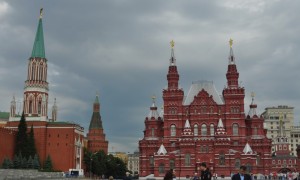 |
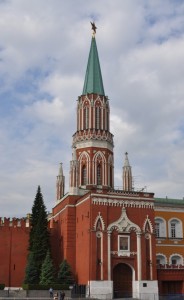 |
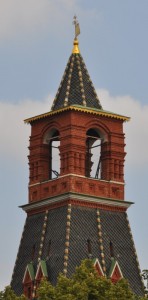 |
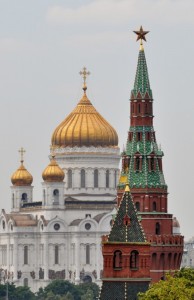 |
Four majestic cathedrals dominate the skyline of the Cathedral Square. The Assumption Cathedral (completed in 1479) with five golden cupolas designed by Italian architect Aristotele Fioravanti was where the Tsars were crowned. The three-domed Cathedral of Annunciation was completed in 1489. The Cathedral of the Twelve Apostles (1653-56) was the church of the Metropolitans and Patriarchs of Moscow. Our guide only took us to see the Cathedral of the Archangel Michael (1508) where the Muscovite tsars including Ivan the Terrible were interred.
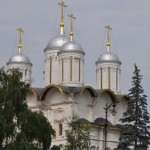 |
After a pleasant tour, we returned to the boat for lunch at 1pm. I took the metro back to the city in late afternoon and spent an enjoyable night at the Musical Centre watching Giselle. It was a full house and the dancers, music and setting were superb!
June 25 Tuesday: Moscow – Rostov on Don (1500km)
I left the boat at 9:30am and got a lift from Mal and Celia to the city. They would spend three more nights in a hotel in the Arbat. I relaxed in the hotel lobby and had an early lunch before taking the metro to Kazanskaya Station. My train for Rostov-on-Don left the station at 1:30pm.
Journey by train is enjoyable. The scenery is fairly flat and not extraordinary. But it is pretty and green. I spent most of the time writing my travel notes and sorting out the photos. There were three other passengers in the compartment and none of them speaks English. They talked non-stop from about 1pm to 9pm (when they went to sleep)! I slept on the upper bunk-bed and did not wake up till 6am the following day!
June 26 Wednesday: Rostov-on-Don
I arrived in Rostov-on-Don before 9:30am. Accordingly to the information available, the hotel I booked online is only 600m from the train station. A local told me to take a tram and a short walk. It turned out to be a nightmare as I walked for almost half an hour under a scotching sun! The hotel, a typical Russian one from the Soviet era has been modernised. But the staff does not speak much English and are unable to give me much information on tourist attractions. There is also no city map!
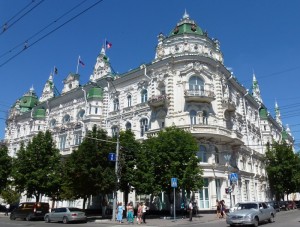 |
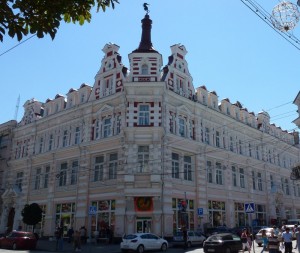 |
Rostov-on-Don is a port city and the administrative centre of Rostov Oblast and the Southern Federal District of Russia with a population of about 1 million. It lies on the bank of the Don River some 30 km from the Sea of Azov. The area around the mouth of Don has been of cultural and commercial importance. In end 1749, a custom house was established in the area to control trade with Turkey. The town with its present name was founded in early 19th century. During World War II, German forces occupied the town because of its strategic importance as a railway junction and a river port accessing the Caucasus. It was occupied for seven months from July 1942 to February 1943 and took ten years to restore the city from the ruins.
With the construction of the Volga-Don Shipping Canal in 1952, Rostov-on-Don became a port of five seas: the Black Sea, the Sea of Azov, the Caspian Sea, the White Sea and the Baltic Sea. It is often referred as the “gateway to the Caucasus”.
The temperature was around 35°C and I stayed in my room till 2pm. Then I ventured out to discover the city on foot. The white-and-blue Cathedral of Virgin’s Nativity (1860-1887) next to the central market dominates the old part of the city. I was amazed by the building old buildings many of which are in fairly poor condition. I reached the bank of the Don River and had a cool beer in a café by the river. After wandering in the city and the market for four hours, I found a nice Italian restaurant and had a seafood dinner. I went to bed at 7:30pm!
June 27 Thursday: Rostov-on-Don – Vladikavkaz
I got up at 6am. As I had to check out at 1pm, I spent the morning exploring the city which is amazingly green and dotted with numerous beautiful buildings of the late 19th century. This city though not striking is a nice break of my long train journey. I enjoy strolling along the Pushkinskaya Street and the parks, looking at the old buildings and discovering the painting on tiles in the underground passages. The messy central market is fun. I tried to find the Pushkin Museum of Fine Art without success. The Monastery of St Jacob is said to be worth visiting. But it is too far and I gave it a miss.
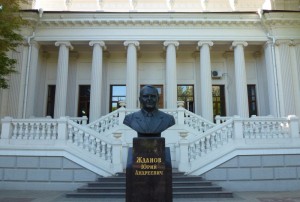 |
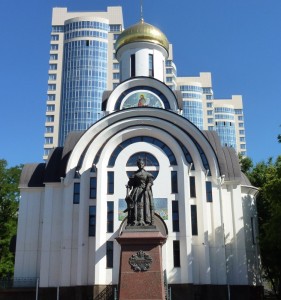 |
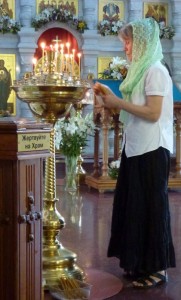 |
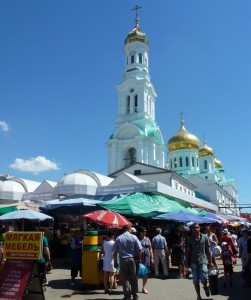 |
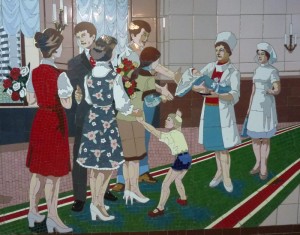 |
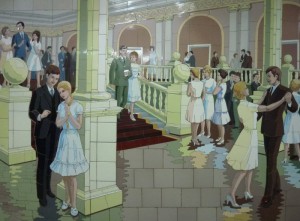 |
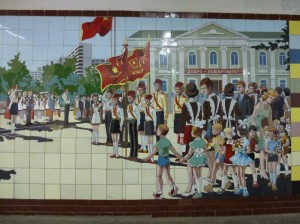 |
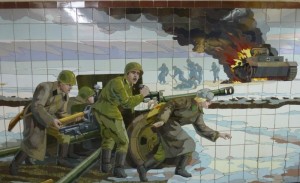 |
I retreated to the hotel lobby during the hot afternoon. I set off for the train station after 7pm on foot which was a mistake. Though it’s less than one kilometre away, the path is unpaved in some parts and not easy to walk with a suitcase. My train departed at 8:10pm and my compartment was full again. I slept well and arrived in Valdikavkaz the following day after 9am. (My group tour to North Caucasus began at this point – See Part III)
Remarks
The first part of my Russian journey started in Moscow and ended in Rostov-on-Don. I do not find this trip exciting but as usual, I have made as much out of it as possible and learnt more about the history of Tsarist Russia. I can now remember its Rurik and Romanov dynasties and leading figures such as Yaroslavl the Wise, Ivan the Terrible, Peter the Great, Empress Elisabeth and Catherine the Great.
I also have a chance to appreciate the architectural masterpieces in SP and Moscow. SP is special and magnificent with a lot of influences from Europe. The Italian architect Francesco Bartolomeo Rastrelli had designed the Smolny Cathedral and Convent, redesigned the Winter Palace (the Hermitage) and created the Grand Catherine Palace in Pushkin and the Grand Palace in Peterhof. The Red Square and the Kremlin in Moscow which are uniquely Russia are unforgettable sights.
I like water and boat trips. But this particular river cruise is not my cup of tea. I love my previous journey by boats to the Philippines, the Three Gorges in China, the Antarctica, Alaska, Svalbard, Greenland, Iceland and the Caribbean. The scenery of these places is magnificent and impressive. The sea can be rough and the journey can be filled with surprises and excitement i.e. the sighting of polar bears, whales, icebergs, fiords, birds, glaciers etc. But this time, I find the river calm and the scenery along the river is green and pretty but without variation.
I am not young but I remain energetic. I enjoy exploration on foot. But unfortunately, I could only spend a total of 19 hours in five stops (Mandrogi, Kizhí, Kirilov, Yaroslavl and Uglich). Kizhí, Kirilov and Yaroslavl are very interesting. I wish I had more time and travel on my own to these places.
My travel experience is normally defined by physical attributes such as the scenery, the history and culture of the place and the people I meet on the road. This time, I am lucky to meet Celia and Mal, Paula and Lou, Heather, Sue and Brian from Group 3. They greeted me with ‘Happy Birthday’ for four days as the Pirate’s Dinner took place three days before my birthday! I had a good time with them and hope to meet them again one day!


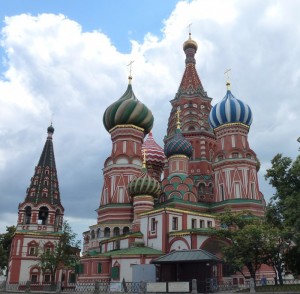
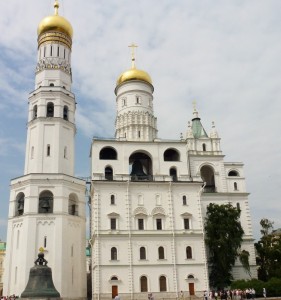
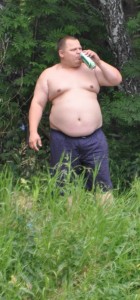
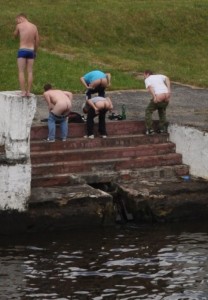
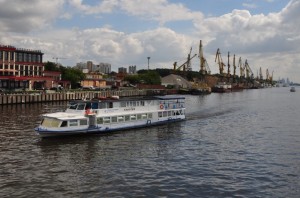
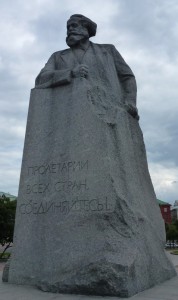
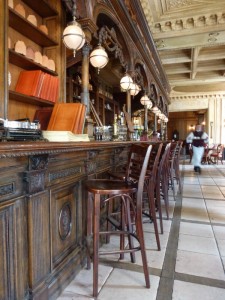
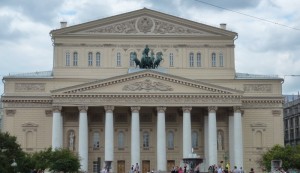
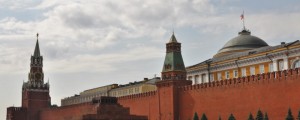
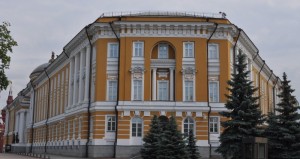
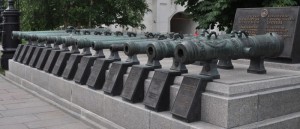
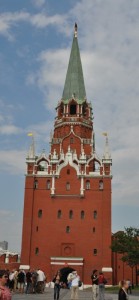
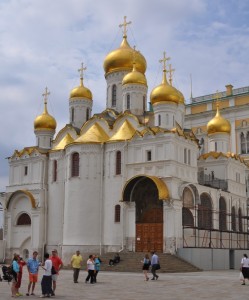
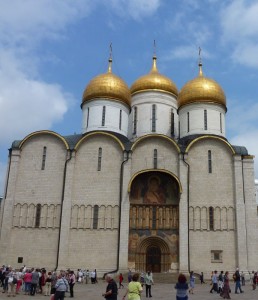
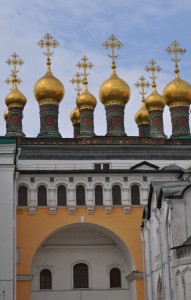
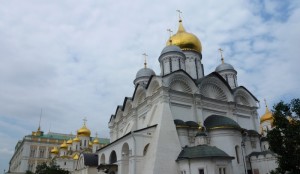
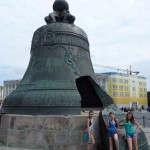
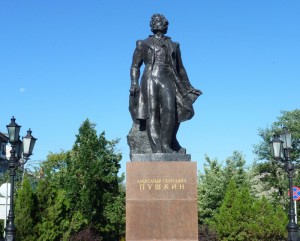
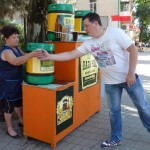
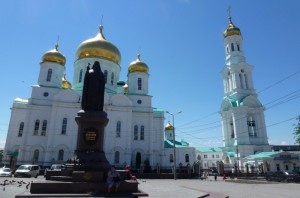
Enjoyed reading this Sarah and thank you for mentioning us. The four special Russian greetings above were previously not so clear to us as we did not have the benefit of your zoom. Thanks for that. Hope you are getting on well in the next stage of your Russian trip. We often speak of your daring and adventurous trip and hope all is going well. Perhaps you are back in Hong Kong by now planning your next excursion. We have settled back into our very comfortable but unadventurous life in the Thames Valley and will be meeting up with Heather next week to visit the Pompeii exbibition at the British Museum. Do keep the blog going – you are definitely living the dream. Love – Sue and Brian
Hi Sarah,
we are enjoying your blog very much,you certainly put plenty of work into it.Very informative and some great pictures,it makes for very interesting reading.We do hope the rest of your trip went well,where to next,We enjoyed most of the trip,then again who wouldn’t,we certainly had a lot of fun and had great companions on board.Keep on blogging,till we meet again,
Cheers from Mal & Celia.
I see you were recently in Australia,should have emailed me so we could of met some where.Keep on blogging,,we find your trips very interesting.
Cheers Mal & Celia.